Introduction
In the traditional real‑estate and equipment‑rental industries, finalizing a lease often meant printing multiple paper copies, couriering them between landlord, tenant, and possibly guarantors, waiting for wet‑ink signatures, and manually scanning or filing signed documents. This cumbersome cycle could take days—or even weeks—before a property could be officially occupied or equipment delivered.
Enter electronic signature (e‑signature) functionality: a secure, legally recognized way to sign documents online. By digitizing and automating signature workflows, e‑signatures dramatically compress lease turnaround times, reduce administrative overhead, and enhance the tenant (or lessee) experience. In this article, we’ll explore how e‑signature technology speeds leases at every step—from document preparation to post‑execution archiving—and outline best practices for implementing a seamless e‑signature solution.
1. Eliminating Paperwork Delays
1.1 Instant Document Delivery
With e‑signature platforms, landlords or property managers upload the lease template, define signature fields, and send a secure link via email or SMS. Recipients access the lease immediately, without waiting for physical delivery—saving 1–3 days that paper couriers or mail would consume.

1.2 Any‑Time, Any‑Where Signing
Tenants can sign leases from a smartphone, tablet, or desktop browser—whether they’re on the road, traveling abroad, or simply away from their printer. This flexibility removes geographic and time‑zone constraints that often stall paper‑based leases.
2. Accelerating Turnaround with Automated Workflows
2.1 Role‑Based Routing
E‑signature tools let you define a signing order—tenant first, then guarantor, then landlord—automatically routing the document to each party in sequence. As soon as one signatory completes their portion, the system instantly notifies the next, eliminating back‑and‑forth coordination.
2.2 Reminders and Escalations
Built‑in reminder schedules prompt signatories who haven’t yet signed after a configurable period (e.g., 24 hours), and escalation rules can notify managers if signatures remain outstanding. Automating these nudges typically reduces the average signing time by over 50%.
3. Reducing Errors and Reworks
3.1 Mandatory Fields and Validation
E‑signature platforms enforce field completion—initials, dates, checkboxes for critical disclosures—so documents cannot be submitted until all required data is provided. This zero‑touch validation prevents invalid or incomplete leases that would otherwise require reprinting and re‑signature.
3.2 In‑Context Guidance
Integrated tooltips, hover‑over explanations, and sample text help tenants understand complex clauses (e.g., security deposit terms) right in the signing interface—reducing queries and legal review cycles that can add days to the process.
4. Seamless Integration with Leasing Systems
4.1 Pre‑Populating Lease Data
By integrating e‑signature functionality with your Customer Relationship Management (CRM) or Property Management System (PMS), lease templates can be auto‑filled with tenant names, unit numbers, rent amounts, and start dates. This eliminates manual data entry and its associated delays and errors.
4.2 Post‑Execution Workflows
Once fully signed, e‑signature platforms can automatically:

- Notify accounting to set up recurring rent invoices.
- Trigger background checks or insurance verification.
- Provision access—for example, send digital key codes to door‑lock systems.
These automated hand‑offs accelerate move‑in readiness by cutting out manual coordination.
5. Enhancing Visibility and Transparency
5.1 Real‑Time Status Tracking
Landlords and tenants alike can log into a dashboard to see exactly who has signed and who’s pending. This real‑time visibility prevents guesswork and eliminates status‑check calls or emails that slow the process.
5.2 Audit Trails and Compliance
Each signature event is time‑ and IP‑stamped, and the platform captures a tamper‑evident audit log alongside the signed PDF. Having this digital audit trail on‑hand expedites legal reviews and compliance checks, reducing legal turnaround by days.
6. Cutting Costs and Administrative Overhead
6.1 Eliminating Printing and Shipping Costs
Switching from paper to e‑signatures removes the need for printers, ink, paper, envelopes, and couriers—saving both time and dollars. For large portfolios handling hundreds of leases monthly, these savings can amount to thousands of dollars per year.
6.2 Reducing Manual Data Processing
Automated data capture from e‑signed leases eliminates hours spent on scanning, filing, indexing, and manual data entry into back‑end systems. Freed‑up staff can then focus on higher‑value tasks like tenant relations and portfolio optimization.
7. Improving the Tenant Experience
7.1 Modern, Frictionless Process
In a market where renters expect digital convenience—from property searches on mobile apps to contactless tours—e‑signature leases round out a modern tenant journey. A seamless signing experience boosts satisfaction and reduces drop‑off at the final contracting stage.
7.2 Accessibility and Inclusion
E‑signature platforms support multiple languages, screen‑reader accessibility, and mobile responsiveness—ensuring all prospective tenants, including those with disabilities, can complete leases easily and quickly.
8. Security and Legal Validity
8.1 Compliance with E‑Signature Laws
Leading e‑signature providers comply with global regulations—ESIGN Act (US), eIDAS (EU), and local Australian laws under the Electronic Transactions Act—ensuring digital leases are legally binding and enforceable.
8.2 Data Encryption and Authentication
Secure e‑signature systems use TLS encryption, multi‑factor authentication (SMS or email OTP), and optional identity verification (ID scans or knowledge‑based questions), verifying signer identity and protecting sensitive tenant information.

9. Best Practices for Rapid Lease Execution
- Standardize Lease Templates: Create modular templates with defined variable fields for easy reuse and integration.
- Automate Field Mapping: Sync tenant and unit data from your PMS to reduce manual setup.
- Define Clear Signing Order: Prevent circular routing by establishing primary and secondary signer sequences.
- Set Automated Reminders: Configure a cadence of reminder emails or SMS to signers after preset intervals.
- Provide Mobile‑First Signing: Ensure your e‑signature solution offers a responsive experience on all devices.
Conclusion
Electronic signature functionality transforms the lease process from a multi‑day, paper‑dependent chore into a streamlined, digital transaction completed in minutes. By eliminating physical document handling, automating workflows, enforcing data validation, and integrating with back‑end systems, e‑signatures accelerate turnaround, cut costs, and enhance both landlord and tenant experience.
Adopting an e‑signature solution is no longer optional—it’s a competitive necessity in fast‑moving markets. For property managers, landlords, and equipment lessors aiming to close deals swiftly and securely in 2025, integrating e‑signatures into your leasing platform is the fastest route to faster leases.

